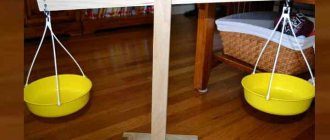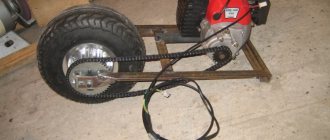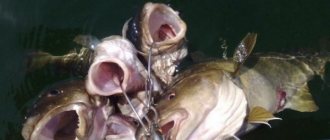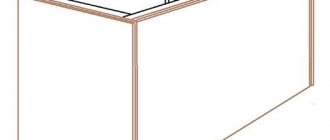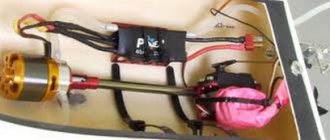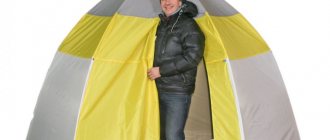And what is my grandfather’s goose float worth! Often, even famous athletes can find this important fishing accessory as a tribute to tradition. Why else make something for fishing with your own hands if you can buy it in a store?
Firstly, this is the price. Whatever you say, a considerable part of the truly reliable and professionally verified baits and components cost quite a lot. And when it comes to recreational fishing, it is much more economical and practical to make the same swivels yourself and worry less about accidental loss.
The same applies to baits. And this is the second reason. Alas, spinners and wobblers on the river simply become consumables, especially for beginners or fishermen who decide to play with a predator in snags in the reservoir.
One spinner, the second after... And already on the old stump sticking out of the water there was another trace of the local fisherman. The fish doesn’t care at all what brand the spinner decided to offer her a bait, and even more so, she won’t admire its “unique exclusive design and amazing aerodynamic characteristics.”
And finally, the third reason why you need to have the skills to make your own fishing accessories is because there is a hopeless situation when fishing. In a very snagged pond, they left their favorite wobblers or twisters, hooked a catchy popper onto distant water lilies... Having a box with the starting material, you can make the same popper even from a wine cork and continue fishing!
What you need to prepare for work
Having your own reliable kukan is the dream of every fisherman. Upon examination, you will notice that the design of the product is quite simple and does not require any professional skills. Let's consider the process of making a kukan based on 5 loops for caught fish. Before starting work, you should prepare the following materials:
- Steel cable in plastic braid with a diameter of no more than 3 mm. The length depends on where the cable will be attached and how many loops the design requires. The average length per loop is taken into account - about 60 cm. For example, you are making a kukan for a predator with 5 loops and will attach it to the boat rails. The distance between the handrails is 1 m, another 0.5 will need to be left in reserve, for 5 loops and their crimps it will take 0.7 x 5 = 3.5 m. In total, you will need to purchase at least 5 m of steel cable.
- Aluminum cable clamps – 12 pcs.
- The tube is plastic or rubber. The length is calculated by the number of loops, taking into account 15-20 cm for each.
- Medium carabiners – 5 pcs.
- Large carabiners (at the ends of the main cable) – 2 pcs.
- Swivels – 5 pcs.
In addition, to make a fishing rod with your own hands, you will need a tool: a chisel, a hammer, a tape measure, and wire cutters.
What you need to make a swivel
Tools you will need are a drill with a metal drill, a vice, and a sharpening machine. But if you do everything carefully, then you can do without a sharpener altogether.
The swivel itself consists of three elements: an 8-10 mm nut, and two other parts, which are made from nails. Therefore, we will need 2 nuts and 4 nails to make a swivel.
Now regarding the diameter of the metal drill. You need to use a drill such that the nail can pass through the hole freely. In this case, the hole should fit into the side of the nut and even have some margin.
How to choose a quality carabiner
Rules for choosing a carbine:
- The carbine must correspond to the type of gear (spinning or feeder gear, where the choice is based on the size of the carbine).
- Correspond to the method of catching fish (for example, if you are fishing with small baits, then you should not use a carabiner; if you are using large-sized baits when fishing with a heavy jig, then use our tips listed below).
What to look for when purchasing:
- Thickness of the material.
- Quality of material.
- Carabiner size.
Where is the carbine attached?
For example, one of the options for attaching a carabiner is used in jig fishing. Thus, a medium-sized wire carabiner is usually attached between a load and a silicone bait (for example, a twister). If we talk about feeder fishing, then in this type of fishing, this accessory is used to attach the feeder.
Homemade kukan
As noted earlier, the kukan is a wonderful device in terms of functionality, then let's try to make a kukan with our own hands at home. At the same time, quite often the fisherman manages to get a product with his own hands that is much more reliable than those offered in stores.
Master Class
Let's move on to how to make kukan with your own hands. 5 meters of the cable must be cut. As mentioned earlier, you will need 5 pieces of 70 cm, after which there will be 1 long piece of 1.5 meters.
Swivels and plastic tubes are strung on this long cable, and the order is as follows: the swivel goes first, then the tube, after 4 swivels and tubes have been put on, the last swivel closes the chain.
We attach large carabiners to the edges of the cable using clamps. We put small carabiners (2 pieces each) on the free edges of the swivels.
From the remaining parts of the cable it is necessary to make loops, the edges of which are fixed with clamps. Use a hammer to get a tight seal. The loops are attached to carabiners, after which you can use the kukan for its intended purpose.
Design No. 3 – Classic hook
Our next design is a very simple hook and ring clasp. This is the simplest design among the four - if you're a beginner, be sure to try this one first.
Bend a piece of wire using the largest diameter of step pliers or a marker as shown in Figure 2. Then bend the longer end into a small loop using the pliers and trim off the excess. Do the same for the other end, but make sure that these loops are not the same size and are slightly different lengths. Use a hammer to knock out the hole between the two loops; it should be very narrow.
How to use carabiners correctly?
To ensure the correct level of insurance, it is necessary to adhere to certain principles of carabiner operation. First, it must be a working product and must be tested every time before use. It is worth calculating the load pattern that will be applied to the carabiner so that they do not accidentally fall on the weak side. There should also be no more than two load points, otherwise the holder may break or rupture. Under no circumstances should heavy loads be applied to an open, unsecured carabiner. And if it does not have a safety clutch, even more so, you must first install it, orient it correctly, and only then apply force.
The most exciting lures for pike
Do not allow anything to impact the product other than the objects attached to it; if it comes into contact with something due to destruction, then under the influence of load this circumstance can become decisive and a crack is guaranteed. In the event of a shock or any other load other than longitudinal, the carabiner may open and the rope may fly out if it is moving in many directions in a very active mode. It can also unwind the clutch if you have positioned the carabiner so that with each upward movement the rope catches and moves the rope slightly.
The functionality of the rifle, which should be checked before each stage of work, depends on its integrity. Therefore, if there are even the slightest cracks or scratches in the main cargo line, the product must be destroyed so that it does not fall on someone after you. It’s worth doing this even if the fasteners have fallen; stresses and microcracks may appear in its internal structure, which will betray you at the most crucial moment. Check the clutch properly. If the connections of the carabiner are dirty, washing is permitted, but the product must be protected from corrosion.
DIY fishing carabiner
Fishermen often use carabiners to rig their gear. There are many of their models in stores, everyone will find one that suits them. They differ in size, shape, design, manufacturer. Of course, reliability, the ability to withstand certain loads.
A common drawback for most products is insufficient load capacity and the presence of various hooks in the design. The first often leads to accumulations of prey due to the bending of the guns and their opening. The second is the cause of constant entanglements, attachments, scratches on the hands, etc. In addition, almost all devices do not pass through the guide rings on the rods; they merge with the fishing line when winding it onto the spool.
One way to solve the problem is to create new designs of carbines that do not contain known flaws. There are plenty of attempts in this regard; it’s worth looking at the proposals of fishermen on the Internet. One of them, in our opinion, is the best, further in the article.
The proposed design of carabiners is based on the refusal to secure the detachable ring of the device with several locks and hooks. And replacing them with a ring-shaped locking element that does not have protruding ends. And most importantly, this element is held on the carabiner not only due to frictional forces, but also due to its elastic properties, which are overcome when the carabiner is opened.
Carabiner with straw
To make this version of the carabiner, you will need an elastic thread with a diameter of 0.03 mm and a piece of fluoroplastic tube.
The procedure for making a carbine:
- a piece of fluoroplastic tube is cut off - its length is equal to the length of the middle line of the figure eight; the diameter should provide firm pressure (through the smallest ring of the carabiner) on the central part of the device; If the tube is too small in diameter, don’t worry: when you first put it on, it will take on the desired diameter; if it is too large, you need to lengthen the pipe, it will decrease to the required diameter.
- the body of the carbine is made of fishing line in the shape of a figure eight with a central part elongated in a line; both free ends are joined in it, approximately in the middle; the rings have different diameters: the smaller one is under the fishing line, the free end of the thread coming out of it is pressed tightly against; more details: to attach the nozzle, its free end is left retracted behind; The ends of the thread are made beveled with a file.
How to use the carabiner:
- Place the tube on the carabiner, covering the free end of the larger ring with it (to do this, tighten with your fingers).
- put a tube on the fishing line;
- put the attachment on the larger ring of the carabiner;
- the carabiner is attached to the fishing line through a smaller ring;
The rifle opens simply. Pinch the large ring with your fingers and pull the tube onto the fishing line.
This carbine is more reliable than those offered by fishing stores. This will never lead to any hook. Its reliability even under heavy loads has been proven by practical use in many fishing trips.
The usual dimensions of a carabiner are: length 6... 7 mm, ring diameter 1.5... 2 mm. Application: for lighting equipment with a line up to 0.15 mm.
Carabiner with spring
The design of this carbine differs from the previous one by replacing the fluoroplastic tube with a spring. The device is stronger than the previous one and can withstand significant loads when fishing.
The main thread for the carabiner here is 0.5 mm (more is possible, it depends on the equipment used). You can make a spring yourself at home, for example, from 0.2 mm wire. It is wound in turn on a mandrel with a diameter of approximately 0.95 mm and has a length equal to the length of the free end of the loop. It is then stretched to a slightly longer length than the straight section on the figure eight. They are placed on the carabiner so that the spring also covers the free end of the larger ring.
To open the carabiner, the spring is compressed along the axis of the smallest ring (to which the fishing line is attached). The free end of the larger ring is released and moved to the side. Attach the attachment and release the spring. As it straightens, it will again close the entire straight insert of the figure eight and securely fix both free ends of the fishing line in the carabiner. Reverse the steps when you need to remove or replace an injector.
The usual dimensions of a carabiner are: length 12 mm, ring diameter 1.5... 5 mm.
Existing types of dog leashes
Today, modern industry offers a wide selection of this essential attribute of dog equipment. Each owner can choose the accessory that suits his pet.
Roulette leash for dogs
Widely popular among pet owners, it is often called an automatic or retractable tape leash.
Roulettes are especially convenient for walking pets inside city streets and parks, as they allow you to quickly adjust the length of the retractable part, shorten or lengthen it in one movement.
They can be cable or tape. The cable is much cheaper, but is only suitable for small pets. In addition, in this case it is dangerous to touch the retractable part with bare hands; you can cut yourself.
If the retractable part is in the form of a tape, it is absolutely safe and reliable. Its length can be from three to ten meters.
The tape measure has a mechanism that allows you to fix the set length, so the tape cannot get tangled in your legs and paws and does not get dirty, since it does not touch the ground.
The dog moves freely, runs or walks next to the person. The length shortens or lengthens automatically; it does not need to be constantly monitored.
Returning from walking the pet and unfastening the leash from the collar, the owner simply presses a button and winds the tape or cable into the box, so it does not take up much space when stored.
The disadvantages of roulette leashes include their relative high cost, the inability to use for walking hyperactive pets, and the dog’s rapidly developing habit of constantly pulling on the tape.
It is important not to allow your pet to chew on the tape - it is not very strong and wears out quickly if it bends often. In addition, the locking mechanism sometimes jams, especially with frequent jerking and tugging, debris and dirt.
Show leash
This is an exclusively exhibition accessory intended for show class dogs. Usually it is expensive and beautiful, but at the same time it is not striking and does not distract the attention of the public and judges from the dog’s exterior.
Show rings can be very different in design, but usually consist of a carabiner and two loops, one of which is put on the dog athlete’s neck, and the other on the owner’s wrist.
This is a very convenient and beautiful accessory.
Leash controller for dogs
This type of leash is designed to correct the dog's behavior. In fact, it acts as a noose; thanks to its use, the pet will quickly wean itself from pulling and tugging on the harness, rushing towards other animals and picking up pieces of food.
With the help of a leash-controller, the dog quickly learns many commands, such as “near”, “sit”, “lie down”, “no”. At the same time, this accessory can be used as classic ammunition.
Typically, the clamp on the controller is made of rawhide with a high resistance force, which allows the cord to hold the load and not fray. The tape itself is made of high-strength and wear-resistant material with a maximum tensile strength of up to 900 kg. In addition, it does not stretch when stretched.
There is also a screw carabiner that allows you to attach the cord to a regular collar; the second end can be fixed to the owner’s waist belt. In this case, his hands remain free.
There are also leash-controller models with one lock. Thus, this is a very convenient accessory that allows you to use it as a classic leash and controller for correcting your pet’s behavioral reactions, such as aggression, disobedience and others. In this case, the animal does not experience pain or psychological pressure, and does not receive any harm.
Dog leash
The dog wears a noose without a collar; its role is played by a special loop. If the dog begins to twitch and pull, it immediately tightens, preventing the pet from breaking the rules.
It is better not to use a leash-noose for walking; the most logical thing is to use it only for practicing training commands, for example, “near” or for rehearsing a performance in the ring with a handler.
Leash for dogs
Such capabilities are provided by the presence of two carabiners and several fastening rings, which make it easy to transform and refasten the equipment.
This leash is quite expensive and before purchasing you need to make sure that all welding points are reliable and made without nicks or roughness.
Leash-harness for dogs
A harness differs from classic leashes with a collar in that the equipment is not attached to the dog’s neck, but is located throughout the body.
This accessory is relevant in the case of an overly active pet or a very miniature breed (toy terriers, chihuahuas). Harnesses are also produced for very large dogs, chow-chows, Rottweilers, and sled breeds.
The material of the harness can be different - canvas, leather, textile, nylon. The product is made either in the form of an interlacing of straps and ribbons, or in the form of a vest.
When choosing such an accessory, it is important to choose the right size and learn how to put it on your pet correctly.
Chain leash for dog
On sale you can often find very beautiful leashes made of metal and consisting of a chain.
In fact, such ammunition has more disadvantages than advantages. Despite the fact that the accessory is beautiful and durable (the dog will never be able to chew it through), there are many inconveniences associated with using a chain. Thus, the pet’s hairs often get stuck between the ranks, causing him pain. Metal is uncomfortable for the owner - it is heavy (which is sometimes good for powerful dogs), and becomes covered with ice in the cold season.
The chain leash looks impressive, although it is expensive. Should not be used for constant walking and training of pets.
Canvas dog leash
This is the most common, inexpensive and widespread type of material for a regular driver leash. It can be made in the form of a loop with a lock or a ribbon with a carabiner attached to the collar.
Today, these leashes up to 10 m long are used less and less, as they have a number of disadvantages: high rigidity, inconvenience for the owner when walking (it hurts the hand), they quickly get wet and take a long time to dry, and take up a lot of space in the house.
Today, this type of accessory is successfully replaced by new ones made from modern materials.
Rubberized leash for dogs
Leashes made of rubberized material appeared on the market not very long ago.
They differ in that rubber threads are woven into one or both sides. Thanks to this, the accessory does not slip out of hands, it is comfortable for a person to hold it and does not hurt when the pet jerks. They may differ in the quality of the material used, the thickness and width of the tape, and the number of threads in it. This type of equipment is extremely convenient for walking and training, especially for large, strong pets.
Nylon Dog Leash
This accessory has already become very popular, it is inexpensive and easy to use, suitable for dogs of any size. Available in different lengths (short and up to 10 m).
How to make a bait trap while fishing?
You planned to go fishing for white fish, but (on purpose!), today a predator woke up in the pond. How to get fry (5-7 cm) using the improvised method? Spiders and wrens are too large to be carried.
Therefore, ordinary plastic bottles will help out. Whatever you say, you can find absolutely any kind of container along the shore of any wild body of water. In our case, you will need a five-liter bottle and a couple of liter bottles.
So, we cut off the top part of liter bottles: 10-12 cm from the neck. We make holes on both sides of the five-liter bottle according to the diameter of the finished funnel. Now we will pierce 3-4 holes on the edge of the funnels from the litrushka and the same along the edge of the cut out “windows” of the five-liter jar. They are needed to secure funnels with wire or cord.
We insert the funnels inside the main container and tie them for reliability. The trap is ready for use. For efficiency, you can put a handful of pearl barley or bread inside the bottle, and for reliability, tie a strong cord to the neck of the five-liter bottle. We carefully lower the trap near the shore, where the sun shines well. The live bait won't keep you waiting long!
Design No. 2 – Hook lock
Our second lock is a hook that was originally designed for clothing. But it is also ideal for some bracelet designs.
To make the eye that the hook fits into, wrap a piece of wire around the largest loop of the pliers. Bend the two ends outward and make two small loops using pliers. Cut off the excess wire using wire cutters and file the ends. If you prefer, pound the piece several times to make it more durable. Your ear is now complete.
To make the hook, bend a piece of 8cm wire around the pliers into a narrow U shape, then bend the top of the U into a hook as shown in Figure 3. Make two small loops at both ends using the pliers.
Connect the resulting parts and our lock is ready for use.
Kukan for spearfishing
When a fisherman stocks up with devices for preserving fish: a kukan, a cage or others, he can calmly fish without worrying about the future fate of the fish. When spearfishing, there are much fewer opportunities. However, in this case, it is possible to use the kukan. In order to explain why it is needed, it makes sense to imagine what will happen if an underwater hunter does not have such a device at his disposal. Having hit a fish with a harpoon, he will have to return to the shore with the prey, ensure its safety, and only then go hunting for the next fish again.
How to make a carbine with your own hands?
What would you do if, during active fishing with frequent breaks, your bag ran out of fasteners for bait? It's simple! Keep a box of large staples or paper clips in your pocket.
With the latter everything will be even easier. After all, armed with pliers, you need to give the bracket a simplified carbine shape. We cut off any excess wire pieces with wire cutters.
And don’t forget about the cambric, which can be made from a tube for medical IV systems. It is very elastic and will perfectly fix the clasp with the bait on.
Fishing carabiner - description, types, method of knitting and manufacturing
A carabiner used in fishing is an element designed to facilitate the fishing process. Some leash rigs and other installations cannot do without this small connecting link. Therefore, the choice of carabiner, the quality and correctness of its fastening will certainly affect the number of fish caught and the safety of all accessories. In this short article we will talk about what this simple “little thing” is, what types of carabiners are presented in our fishing stores, how to choose the right one and apply it in practice, and show several life hacks for making them at home.
Choosing the right leash
In order for walking your pet to be enjoyable for both the animal and the person, it is very important to choose the right leash.
For example, for a walk in the park, it is better to choose a roulette leash, then the animal can calmly run on a long strap, and if necessary, you can take it on a short sling.
To walk with a large dog on city streets or travel on public transport, you need to use a walker; for training and sports, there are different types of equipment, discussed in detail above.
How to make a twister yourself?
Both our fishermen and our predators have become very fond of soft baits. Pike, pike perch, perch, bersh... The only significant drawback of vibrotails is their pliability to the teeth.
After catching the second or third trophy, the silicone becomes cut up and down, losing its working properties. Remember: never throw away twisters that have served their purpose!
So, first we need to make a mold for casting. We dilute the gypsum to the state of thickened sour cream in a convenient container. Then we carefully place a couple of baits there, drowning them to get an imprint.
When the plaster has completely hardened, we carefully take out the submerged baits. Now let’s lubricate the resulting impressions in plaster with regular sunflower oil so that the new twisters don’t stick.
The starting material for pouring is melted old silicone baits or silicone from the household goods department. We cut them into pieces and melt them in an iron jar on the stove. Be sure to stir the silicone while melting. For aesthetics, add dyes to the melted mass. It is enough to choose a couple of contrasting colors: yellow-red, green-yellow, black-red, etc.
However, there is one “but”: if we want to make the twister two-color, we first pour one layer into the plaster mold, wait for it to dry, and only then pour silicone of a different color. The poured mass dries within 20-25 minutes. Carefully remove the finished twister and place it in cold water for a few minutes. The bait is ready.
How to make a winding ring?
This is probably the simplest element that can be done just as easily. It is enough to find an unnecessary one or purchase a spiral for an electric stove within 2 kW on a used market.
The diameter of the wire and its rigidity will provide the winding ring with the necessary properties. We simply bite off “rings” with pliers every 3 turns of the spiral. Now you don’t have to worry about losing such a trifle.
Design No. 4 – S-hook
Our final clasp is the elegant S-hook.
Bend both ends of the wire around the 9mm step of the pliers or around the marker (handle) to create a symmetrical S-shape. Then form two tiny loops using pliers on both ends and trim off the excess. File the sharp ends with a file and, if necessary, beat off the part.
Just like the classic hook we made earlier, the S-hook must be connected to the rings before use. We'll discuss how to make a split ring yourself next.
Added bonus: how to make your own split ring.
To create a split ring, tightly wrap a piece of wire several times around a small frame with a diameter of 5-6-7 mm, as shown in Figure 2. Remove the resulting spiral from the frame and cut it with side cutters in a straight line. Ideally, it is advisable to use a jewelry jigsaw here, but professional wire cutters with one-sided sharpening will also cope well with this task.
Source
The need to attach a swivel to a carabiner
The purpose of the swivel is to combat line twisting. At the same time, this can be an extra element of equipment, which will add heaviness to the overall structure and make it more noticeable in the water.
Experienced fishermen are inclined to believe that swivels should be attached to a carabiner only when using spinners and such universal baits for predators as Devon. The peculiarity of these types of artificial baits is that they have a strong axial rotation, which makes the line super twisty.
How to make your own carbine. DIY steel wire carabiner
Fishermen often use carabiners to set up rigs. There are many models of them in stores, everyone can find a suitable one. They differ in sizes, shapes, designs, and manufacturers. Naturally, reliability, ability to withstand certain loads.
A common drawback of most products is insufficient load capacity and the presence of various hooks in the design. The first often leads to loss of prey due to the bending of the carbines and their opening. The second is the reason for constant hooking, clinging, scratches on the hands, etc. In addition, almost all devices do not pass through the passage rings on the rods, and get tangled in the fishing line when they are wound with it on the reel.
One of the ways to solve the problem is to create new designs of carabiners that would not contain the noted shortcomings. There are enough attempts at this, it’s worth looking at the offers of fishermen on the Internet. One of them, in our opinion one of the best, is discussed later in the article.
The proposed design of carabiners is based on the refusal to fix the detachable loop of the device with different locks and hooks. And replacing them with a ring-shaped, enclosing element that does not have any ends protruding to the side. And most importantly, this element is held on the carabiner not only due to frictional forces, but also due to its elastic properties, which are overcome when the carabiner is opened.
Carabiner with straw
To make this version of the carbine, you will need an elastic wire 0.03 mm in diameter and a piece of fluoroplastic tube.
The procedure for making a carbine:
- The body of the carbine is made from wire in the shape of a figure eight with the middle part elongated in a line; both free ends join exactly in it, approximately in the middle; the rings are made of different diameters: the smaller one is under the fishing line, the free end of the wire extending from it is pressed tightly to the middle part of the “eight”; the larger one is for attaching the nozzle; its free end is left away from the middle part of the “eight”; The ends of the wire are made oblique with a file.
- cut off a piece of fluoroplastic tube: its length is equal to the length of the center line of the “figure eight”; the diameter should ensure a tight fit (through the smaller ring of the carabiner) onto the middle part of the device; if the tube is too small in diameter, there is no need to worry: the first time you put it on, it will take on the desired diameter; if it’s too big, you need to stretch the tube, it will shrink to the desired diameter.
Reliable carbines for fishing with Aliexpress
If the article “The Weakest Link” has already been read, then the likelihood of purchasing fishing accessories from a Chinese manufacturer automatically disappears. It was the same for me. However, as it turned out later, not everything is so bad. All you have to do is spend some money, order several models from “real” Chinese manufacturers and test them while fishing.
Just for fun, fasteners from 3 different companies were ordered from Aliexpress. He equipped leashes made of fluorine and tungsten with carabiners. Some people didn’t like the bend of the toe. It was inconvenient to change wobblers. Another questioned the quality of the wire. I had to use pliers to press the bracket. There have been no problems with only one model so far.
The name of the office is "Paxipa". Engaged in the sale of baits and equipment for spinning and carp fishing. By the way, they sell pretty good offset hooks.
NHNCH
How to make a feeder for a donkey or feeder?
The most important element of bottom gear is the feeder. But why spend money on primitive designs if you can make them yourself? For a spiral type feeder, you will need an empty ballpoint pen and steel (or copper) wire.
Using pliers, we fix the wire at one end of the rod adjusted in length and “wrap” the spiral around it to the other end. Having bent and crimped the end of the wire on the rod, we bite off the rest. This feeder is successful when used as a sliding rig.
If you want to make both a feeder and a sinker at the same time, then the finished spiral feeder can be lowered with one edge into a spoon with molten lead. Or fix a thick lead plate on the rod in advance.
Design No. 1 – Toggle Lock
Our first lock is a classic design toggle with a “ring” and a counter stick. First, let's make a response stick. To make the rod, wrap a 3cm piece of wire around the smallest loop of the pliers. Align the two ends of the wire using a ruler, measure 1cm for each end and trim off the excess. I file the ends of the wire with an electric nail machine, this is my secret weapon, a jewelry hammer can only flatten the sharp ends, and the machine can round the edges. If you don't have a machine, round off the ends of the wire with a diamond file or nail file. The classic detail of a togla is a perfect circle. But it is difficult to achieve with thick square wire; if you want a classic ring, use round wire.
It is better to make a teardrop shape from square silver wire. Bend a piece of wire (about 7 cm) around a small frame (such as a marker) and form a teardrop shape. Bend 1 end of the wire perpendicular to the drop using pliers and wrap. Wrap the other end of the wire around the pliers to create a small loop. If necessary, you can beat the resulting part with a jewelry hammer.
